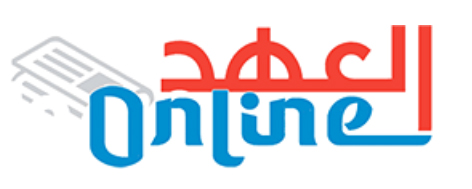د. محمد يوسف قباني يكتب: تصميم نظام الحوكمة: العلاقة بين الجودة والشفافية (28) Governance System Design: The Relationship between Quality and Transparency (28) Dr. Mohamed Elgabbani..

د. محمد يوسف قباني يكتب: تصميم نظام الحوكمة: العلاقة بين الجودة والشفافية (28)
Governance System Design: The Relationship between Quality and Transparency (28)
Dr. Mohamed Elgabbani..
إن الحوكمة تشكل ركيزة أساسية لأي منظمة أو مؤسسة أو حكومة، وتؤثر على عملية صنع القرار والمساءلة وتحقيق الأهداف. ويضمن نظام الحوكمة المصمم جيدًا الكفاءة والفعالية والسلوك الأخلاقي، حيث تشكل الجودة والشفافية عنصرين مترابطين يدفعان إلى تحقيق النجاح
المستدام. وتعزز الحوكمة الجيدة التوافق الاستراتيجي وتماسك السياسات والتميز في الخدمة، في حين تعزز الشفافية الثقة والمشاركة والمساءلة. وعندما تعمل هذه العناصر معًا، فإنها تخلق بنية حوكمة مرنة ومتجاوبة وجديرة بالثقة.
تشير الحوكمة إلى إطار القواعد والممارسات والعمليات التي يتم من خلالها توجيه المنظمات والمؤسسات والتحكم فيها. وهي تشمل أبعادًا مختلفة، بما في ذلك حوكمة الشركات والحوكمة العامة والحوكمة المؤسسية، وكل منها يتطلب توازنًا بين القوة والمسؤولية والإشراف.
تعني الجودة في الحوكمة ضمان الكفاءة والفعالية ورضا أصحاب المصلحة، في حين تنطوي الشفافية على الانفتاح وإمكانية الوصول والوضوح في صنع القرار والعمليات.
إن العلاقة بين الجودة والشفافية في تصميم نظام الحوكمة أمر بالغ الأهمية، حيث تعمل الشفافية على تعزيز الثقة العامة والامتثال، في حين تضمن الجودة أن تؤدي القرارات والسياسات إلى نتائج إيجابية. إن غياب الشفافية يعني أن أنظمة الحكم معرضة للفساد وانعدام
الكفاءة وانسحاب أصحاب المصلحة. وعلى العكس من ذلك، فإن الافتقار إلى الجودة يؤدي إلى حوكمة غير فعّالة، حتى لو تم الحفاظ على الشفافية. إن إيجاد التوازن الصحيح ضروري للحوكمة المستدامة التي تخدم المصالح المؤسسية والعامة.
يستكشف هذا المقال العلاقة الديناميكية بين الجودة والشفافية في الحكم، ويسلط الضوء على فوائدها، ويقدم التوضيحات، ويقدم الأمثلة، ويناقش التحديات في تحقيق كليهما ضمن إطار الحوكمة.
العلاقة بين الجودة والشفافية في الحكم
يجب أن يدمج نظام الحكم الجودة والشفافية معًا ليعمل بشكل فعال. الجودة بدون الشفافية يمكن أن تؤدي إلى الشكوك، في حين أن الشفافية بدون الجودة يمكن أن تؤدي إلى عدم الكفاءة.
دور الشفافية في تعزيز جودة الحكم
تعمل الشفافية كآلية لتحسين جودة الحكم من خلال ضمان أن تكون القرارات والسياسات والعمليات مفتوحة للتدقيق. كما توفر لأصحاب المصلحة إمكانية الوصول إلى المعلومات، مما يسمح لهم بتقييم أداء القادة والمؤسسات. تتضمن بعض الطرق التي تعزز بها الشفافية جودة الحوكمة ما يلي:
المساءلة: تضمن الحوكمة الشفافة أن يكون صناع القرار مسؤولين عن أفعالهم، مما يقلل من الفساد ويعزز القيادة الأخلاقية.
المشاركة العامة: عندما تكون عمليات الحوكمة مفتوحة، يمكن للمواطنين والموظفين وأصحاب المصلحة المساهمة بالأفكار والملاحظات، مما يؤدي إلى اتخاذ قرارات أكثر استنارة وفعالية.
الحد من الفساد: يزدهر الفساد في السرية. تقلل الشفافية من خطر سوء السلوك من خلال جعل المعلومات متاحة وخاضعة للمراجعة.
الثقة والشرعية: تكتسب المنظمات والحكومات التي تعمل بشفافية ثقة عامة، مما يعزز مصداقيتها وشرعيتها.
دور الجودة في تعزيز الشفافية
تضمن الجودة في الحوكمة أن تكون الشفافية ذات معنى وليست مجرد رمزية. إن النظام الذي يوفر الوصول إلى معلومات غير موثوقة أو مجزأة لا يجسد الشفافية حقًا. تشمل هياكل الحوكمة عالية الجودة:
صنع القرار الفعّال: تضمن الحوكمة عالية الجودة أن تكون عمليات صنع القرار منظمة بشكل جيد، ومدفوعة بالبيانات، ومستندة إلى أفضل الممارسات.
اتساق السياسات: لا تكون السياسات الشفافة فعّالة إلا إذا تم تصميمها وتنفيذها بشكل جيد وفقًا لمعايير عالية من الجودة.
التواصل الفعّال: لا معنى للشفافية إذا لم يتمكن أصحاب المصلحة من فهم المعلومات المقدمة. تضمن الحوكمة عالية الجودة التواصل الواضح والدقيق والقابل للوصول.
القدرات المؤسسية: تشمل الحوكمة عالية الجودة الموظفين المهرة والبنية الأساسية القوية والتكنولوجيا التي تدعم جهود الشفافية.
فوائد نظام الحوكمة الذي يدمج الجودة والشفافية
إن نظام الحوكمة الذي يدمج الجودة والشفافية بنجاح يحقق فوائد متعددة:
زيادة الثقة العامة – من المرجح أن يدعم المواطنون والموظفون وأصحاب المصلحة هياكل الحوكمة التي تعمل بشكل مفتوح وفعال.
تحسين عملية اتخاذ القرار – تسمح الحوكمة الجيدة المدعومة بعمليات شفافة بسياسات أكثر استنارة وفعالية.
النمو الاقتصادي والاستقرار – تجتذب البلدان والشركات ذات الحوكمة الشفافة والعالية الجودة المستثمرين، مما يؤدي إلى التنمية الاقتصادية.
الامتثال والتنظيم – تضمن الشفافية والجودة الالتزام بالقوانين واللوائح والمعايير الأخلاقية.
الابتكار والقدرة على التكيف – يشجع نظام الحوكمة المنظم جيدًا الابتكار والتحسين المستمر، حيث يعزز التواصل المفتوح تبادل الأفكار.
أمثلة على تصميم نظام الحوكمة الفعال
لتوضيح العلاقة بين الجودة والشفافية، ضع في اعتبارك الأمثلة التالية:
الحوكمة العامة في الدول الاسكندنافية – تتمتع دول مثل السويد والدنمرك وفنلندا بمستويات عالية من الشفافية وجودة الحوكمة، مما يؤدي إلى انخفاض معدلات الفساد وثقة عامة قوية في المؤسسات.
حوكمة الشركات في شركات التكنولوجيا – تحافظ شركات مثل Apple وMicrosoft على أنظمة حوكمة تؤكد على اتخاذ القرارات الجيدة والتقارير المالية الشفافة، مما يضمن ثقة أصحاب المصلحة.
الإطار التنظيمي للاتحاد الأوروبي – يؤكد نظام الحوكمة في الاتحاد الأوروبي على الشفافية في صنع السياسات وصنع القرار، بدعم من البحوث والتقييم عالي الجودة.
التحديات في تحقيق الجودة والشفافية في الحوكمة
على الرغم من الفوائد، فإن دمج الجودة والشفافية في الحوكمة يواجه العديد من التحديات:
مقاومة التغيير – قد يعارض بعض أصحاب المصلحة مبادرات الشفافية بسبب الخوف من المساءلة أو الكشف عن عدم الكفاءة.
التعقيد البيروقراطي – يمكن أن تعيق الطبقات البيروقراطية المفرطة الشفافية والجودة من خلال جعل الحوكمة بطيئة وغير فعالة.
التضليل والتلاعب – في عصر الاتصالات الرقمية، يمكن أن يؤدي التضليل إلى تشويه جهود الشفافية وتقليل جودة الحوكمة.
قيود الموارد – يتطلب تحقيق حوكمة عالية الجودة مع الشفافية الاستثمار في التكنولوجيا والتدريب والبنية الأساسية.
الحواجز الثقافية والسياسية – تقاوم بعض المجتمعات والأنظمة السياسية الشفافية لأسباب تاريخية أو أيديولوجية أو بنيوية.
يتعين على تصميم نظام الحوكمة إيجاد توازن بين الجودة والشفافية ليكون فعالاً. ففي حين تعمل الشفافية على تعزيز المساءلة والثقة، تضمن الجودة الكفاءة والفعالية والمشاركة الهادفة. ويؤدي دمج هذين العنصرين إلى تحسين عملية اتخاذ القرار، والثقة العامة، والنجاح
المؤسسي. ومع ذلك، لا بد من معالجة التحديات مثل عدم الكفاءة البيروقراطية، ومقاومة التغيير، والقيود على الموارد لتحقيق نظام حوكمة شفاف وعالي الجودة.
في الأمد البعيد، يعتمد نجاح أي نظام حوكمة على قدرته
على الحفاظ على نهج واضح ومنفتح وعالي المستوى في اتخاذ القرار وتنفيذ السياسات. ومن خلال إعطاء الأولوية للجودة والشفافية، يمكن للمنظمات والحكومات إنشاء هياكل حوكمة مستدامة ومرنة ومفيدة لجميع أصحاب المصلحة.
Governance is a fundamental pillar of any organization, institution, or government, influencing decision-making, accountability, and the achievement of objectives. A well-designed governance system ensures efficiency, effectiveness, and ethical
conduct, with quality and transparency being two interdependent components that drive sustainable success. Quality governance fosters strategic alignment, policy coherence, and service excellence, while transparency strengthens trust,
participation, and accountability. When these elements work together, they create a governance structure that is resilient, responsive, and trustworthy.
Governance refers to the framework of rules, practices, and processes by which organizations and institutions are directed and controlled. It encompasses various dimensions, including corporate
governance, public governance, and institutional governance, each requiring a balance of power, responsibility, and oversight. Quality in governance means ensuring efficiency, effectiveness, and
stakeholder satisfaction, while transparency involves openness, accessibility, and clarity in decision-making and operations.
The relationship between quality and transparency in governance system design is crucial, as transparency fosters public
trust and compliance, while quality ensures that decisions and policies lead to positive outcomes. Without transparency, governance systems risk corruption, inefficiency, and stakeholder
disengagement. Conversely, a lack of quality results in ineffective governance, even if transparency is maintained. Striking the right balance is necessary for sustainable governance that serves both institutional and public interests.
This essay explores the dynamic relationship between quality and transparency in governance, highlighting their benefits, providing clarifications, offering examples, and discussing the challenges in achieving both within a governance framework.
The Relationship between Quality and Transparency in Governance
A governance system must integrate both quality and transparency to function effectively. Quality without transparency can lead to skepticism, while transparency without quality can result in inefficiency.
The Role of Transparency in Enhancing Governance Quality
Transparency serves as a mechanism to improve governance quality by ensuring that decisions, policies, and processes are open to scrutiny. It provides stakeholders with access to information, allowing them to evaluate the performance of leaders and
institutions. Some ways transparency enhances governance quality include:
Accountability: Transparent governance ensures that decision-makers are held responsible for their actions, reducing corruption and fostering ethical leadership.
Public Engagement: When governance
processes are open, citizens, employees, and stakeholders can contribute ideas and feedback, leading to more informed and effective decisions.
Reduced Corruption: Corruption thrives in secrecy. Transparency reduces the risk of misconduct by making information accessible and subject to review.
Trust and Legitimacy: Organizations and governments that operate transparently gain public trust, enhancing their credibility and legitimacy.
The Role of Quality in Strengthening Transparency
Quality in governance ensures that transparency is meaningful and not just symbolic. A system that provides access to unreliable or fragmented information does not truly embody transparency. High-quality governance structures include:
Efficient Decision-Making: Quality governance ensures that decision-making processes are well-structured, data-driven, and based on best practices.
Policy Coherence: Transparent policies are only effective if they are well-designed and implemented with high standards of quality.
Effective Communication: Transparency is meaningless if stakeholders cannot understand the information provided. Quality governance ensures clear, precise, and accessible communication.
Institutional Capacity: High-quality governance includes skilled personnel, robust infrastructure, and technology that support transparency efforts.
Benefits of a Governance System Integrating Quality and Transparency
A governance system that successfully integrates quality and transparency yields multiple benefits:
Increased Public Trust – Citizens, employees, and stakeholders are more likely to support governance structures that operate openly and efficiently.
Improved Decision-Making – Quality governance supported by transparent processes allows for better-informed and more effective policies.
Economic Growth and Stability – Countries and corporations with transparent and high-quality governance attract investors, leading to economic development.
Compliance and Regulation – Transparency and quality ensure adherence to laws, regulations, and ethical standards.
Innovation and Adaptability – A well-structured governance system encourages innovation and continuous improvement, as open communication fosters the exchange of ideas.
Examples of Effective Governance System Design
To illustrate the relationship between quality and transparency, consider the following examples:
Nordic Countries’ Public Governance – Countries like Sweden, Denmark, and Finland have high levels of transparency and governance quality, leading to low corruption rates and strong public trust in institutions.
Corporate Governance in Tech Firms – Companies like Apple and Microsoft maintain governance systems that emphasize quality decision-making and transparent financial reporting, ensuring stakeholder confidence.
The European Union’s Regulatory Framework – The EU’s governance system emphasizes transparency in policy-making and decision-making, backed by high-quality research and evaluation.
Challenges in Achieving Quality and Transparency in Governance
Despite the benefits, integrating quality and transparency in governance faces several challenges:
Resistance to Change – Some stakeholders may oppose transparency initiatives due to fear of accountability or exposure of inefficiencies.
Bureaucratic Complexity – Excessive bureaucratic layers can hinder both transparency and quality by making governance slow and inefficient.
Misinformation and Manipulation – In an era of digital communication, misinformation can distort transparency efforts and reduce governance quality.
Resource Constraints – Achieving high-quality governance with transparency requires investment in technology, training, and infrastructure.
Cultural and Political Barriers – Some societies and political systems resist transparency due to historical, ideological, or structural reasons.
Governance system design must strike a balance between quality and transparency to be effective. While transparency fosters accountability and trust, quality ensures efficiency, effectiveness, and meaningful engagement. The integration of these two components leads to better decision-
making, public confidence, and institutional success. However, challenges such as bureaucratic inefficiencies, resistance to change, and resource limitations must be addressed to achieve a governance system that is both transparent and of high quality.
In the long run, the success of any
governance system depends on its ability to maintain a clear, open, and high-standard approach to decision-making and policy implementation. By prioritizing both quality and transparency, organizations and governments can create governance structures that are sustainable, resilient, and beneficial for all stakeholders.








